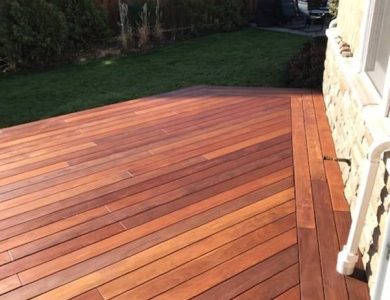
Pooja Room Design Checklist: 4 Essential Considerations
Introduction
A pooja room design should be selected in such a manner that perfectly blends with the overall theme of the home. The chosen design should also incorporate elements of personalization to ensure your individuality is reflected. There are a lot of Pooja Room Designs one can choose from. But how do you select the best design for your home? Here is a list of 4 vital things that need to be considered before finalizing the Pooja Room Interior Design of your home.
1. The Location of the Pooja Room
When you are looking for ideas for your Pooja Room Design one of the first things that need to be considered is the location of the Pooja space. The location of the Pooja Unit should be such that it easily blends with the overall theme of your home.
Where can I place my Pooja Room at home?
Separate Pooja Room: If you have a big house then opting for a separate pooja room is advisable. If there is any unused space in the home such as an abandoned storehouse that too can be converted into Pooja Room.
Pooja Unit in Living Room: What if your house does not have sufficient space to feature a separate Pooja room? In such cases, the Pooja Unit can be easily placed in the living room. The use of partition walls to separate pooja space from the rest of the home is now in trend.
Pooja Unit in Bedroom: If you don’t want to place the Pooja Unit in the living room then placing it in the bedroom is viable. The use of a floating shelf pooja unit in the bedroom is recommended by modern luxury interior designers.
2. The Direction of the Pooja Unit
The direction of the Pooja Unit is another vital aspect of Pooja Room Design. The direction of the Pooja unit is important because it can drive positive energies into our homes. As per the principles of Vaastu ideally, the Pooja space in any home should be placed in any northeast corner of the home. While placing it in the southwest direction is strongly warned against.
Why placing the Pooja Unit in the right direction is important?
Symbol of Auspiciousness: While finalizing Hindu Pooja Room Designs the direction of the Pooja space should not be neglected. As per the Vaastu and Veda principles placing the Pooja space in the northeast direction is considered auspicious.
Best use of Natural Light: Are you one of those people who like worshipping in the morning? Then you can make the most of the natural light by placing the Pooja space in the northeast direction. The presence of natural light during Pooja hours can set your mood for the rest of the day.
3. The Choice of Pooja Unit Materials
The choice of Pooja Unit materials can’t be neglected when choosing Pooja room designs of your home. The choice of the right material for the Pooja space is vital because it can impact the overall aesthetics of the home. The choice of materials can also serve as a strong indicator of your personality and preferences.
Which are the different Pooja unit materials that I can use in my Pooja Room?
Go for a Wooden Pooja Unit: Wooden Pooja Units have a timeless appeal as they are inspired by natural tones. No matter whether you have a standing pooja unit or a wall-mounted pooja space; wood finds a place everywhere. Even the storage units of the Pooja space can be made of wood.
A Marble-Themed Pooja Space: The use of marble in Pooja spaces is widely recommended by luxury interior designers. The use of marble in pooja spaces is advisable if you have a separate pooja room. A pooja room floor glittered with marble can create a stunning pathway to your Pooja space.
4. Lighting of the Pooja Unit:
The lighting of the pooja space is probably the most vital aspect of modern pooja room designs. The purpose of pooja room lighting is now beyond illuminating the pooja space. These lighting equally contribute to the aesthetics of the Pooja space as well.
Which are the different types of Lighting I can use in my Pooja space?
Spotlights: Spotlights are one of the best options for Pooja Units of all sizes. Spotlights can be used to focus on specific areas of the Pooja space like idols. Recessed spotlights are one of the best options for big pooja spaces. While pin spotlights are most suitable for small pooja spaces.
Strip Lights: Strip lights have traditionally been associated with festive occasions. But modern interior designers are of the view that these aesthetic lighting can be used throughout the year. The strip lights should be ideally placed along the frames of the Pooja Unit to sparkle up the space.
Pendant Light: If you have a separate designated Pooja Room then you can consider the addition of a pendant light. Pendant lights in the pooja room should either be placed towards the center of the area or close to the Pooja unit. It will create a focal point in the pooja area and add to the aesthetics of the space.
The Final Note!
This blog looked at 4 vital things that need to be taken care of while finalizing the pooja room designs of your home. The Pooja Unit is a vital component of many Indian homes. And this often makes people wonder how to finalize the designs of their Pooja Space. The right selection of Pooja unit location, direction, material, and lighting can ensure nothing has been compromised with the aesthetic part of your Pooja space.



